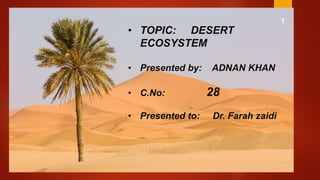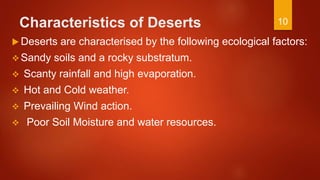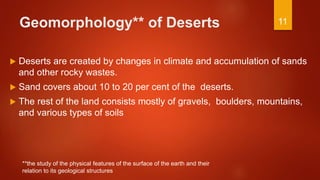Desert ecosystems are defined by interactions between organisms, climate, and other environmental factors. Deserts cover about one-third of the Earth's land surface and are characterized by low rainfall (<10 inches annually), dry air, and harsh conditions. Both plants and animals in deserts have adapted to limited water availability and extreme temperatures. Primary production is very low in deserts due to scarce resources. Camels and other desert-dwelling species have specialized physical traits that allow them to survive in arid environments with little food or water.































